Native to Asia, the Ring-necked Pheasant is one of the most successful introduced bird species in North America. They are exceptionally prized by hunters and may be the most studied game bird in the world.
In Utah, as in much of their adopted range, their numbers are declining due to modern farming technologies and practices which are responsible for degradation of their preferred habitat (small farms with diversified crops and many patches of idle habitat).
Collisions with vehicles are a major cause of pheasant mortality. In a Nebraska study, 7,195 (known) pheasants were killed by vehicles in a 439 mile section of Interstate 80 in 7 years. (I once hit a beautiful male pheasant while driving a very large U-haul truck at 65 mph. It glanced off the windshield, which definitely got my attention, then wedged in the side-mirror, which it broke. I expected to be charged for the mirror but the U-haul folks were fly fishermen and were so delighted to get the tail feathers for tying flies that they let me off with no charge).
During winters with heavy snowfall and severe cold these birds require dense winter cover such as cattails in wetlands, which is part of the reason they do well at Farmington Bay WMA where these photos were taken recently.
Because of the snow and bright sunshine my camera techs were all over the map and pretty meaningless so I’m not including them this time.
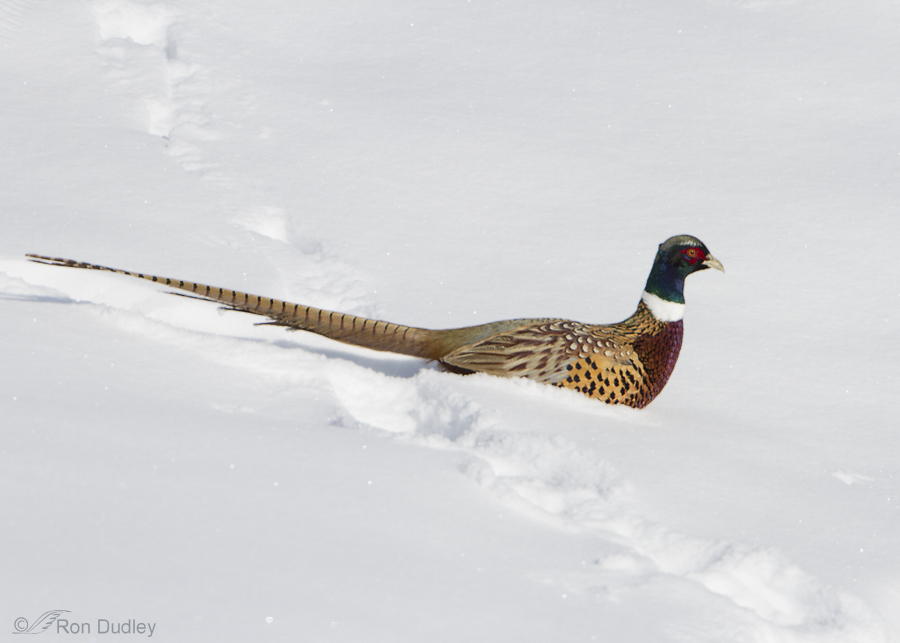
These heavy-bodied birds are somewhat reluctant to fly so deep powdery snow presents some problems for them. Typically they push their bodies through it, creating deep channels in the snow.
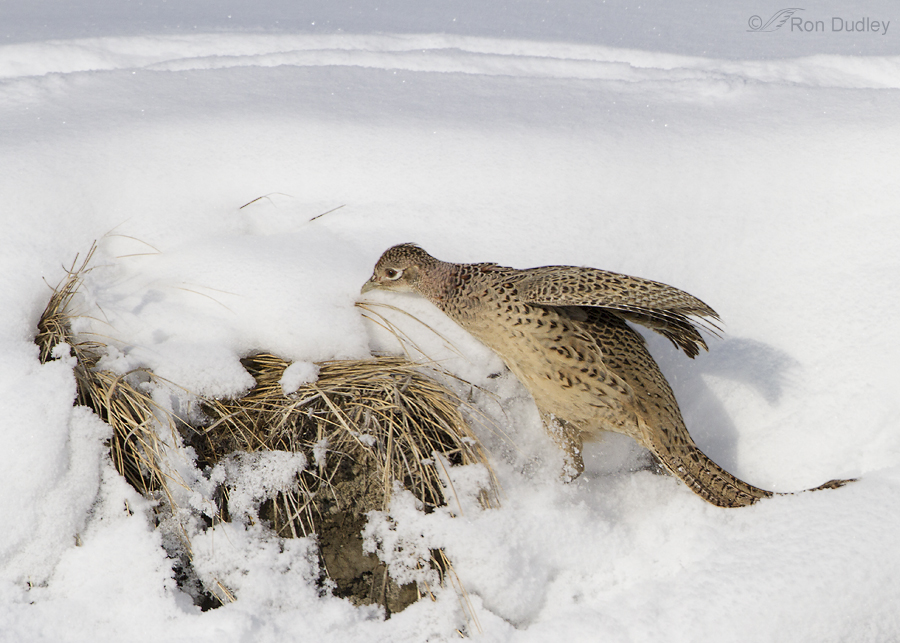
When they’re not actively feeding they like to find some kind of stable platform out of the snow to perch on. This female is struggling through the snow on the side of a hill to reach an exposed area to perch and rest. Notice how she’s using her tail to help keep her from sinking into the powder.
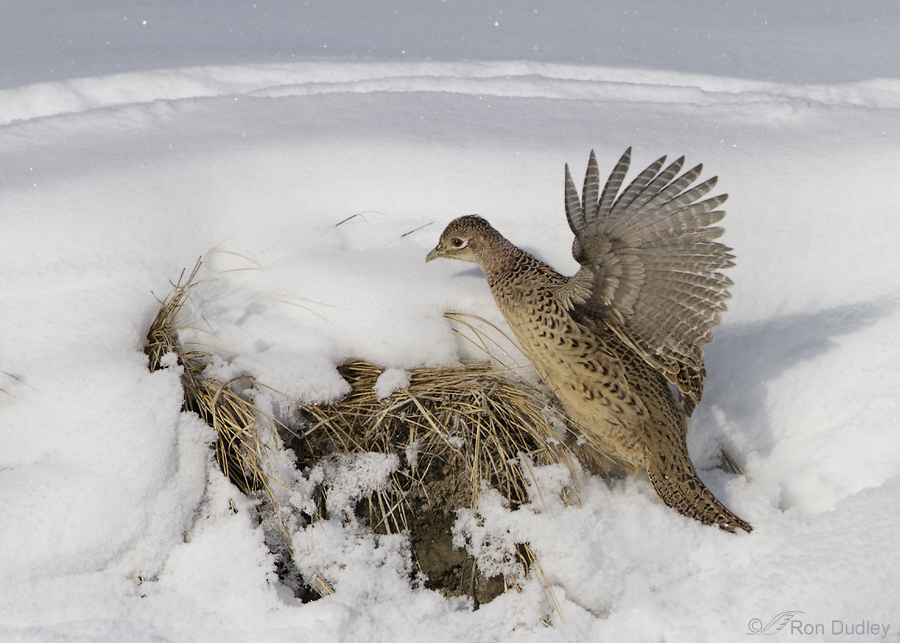
She finally reached the platform…
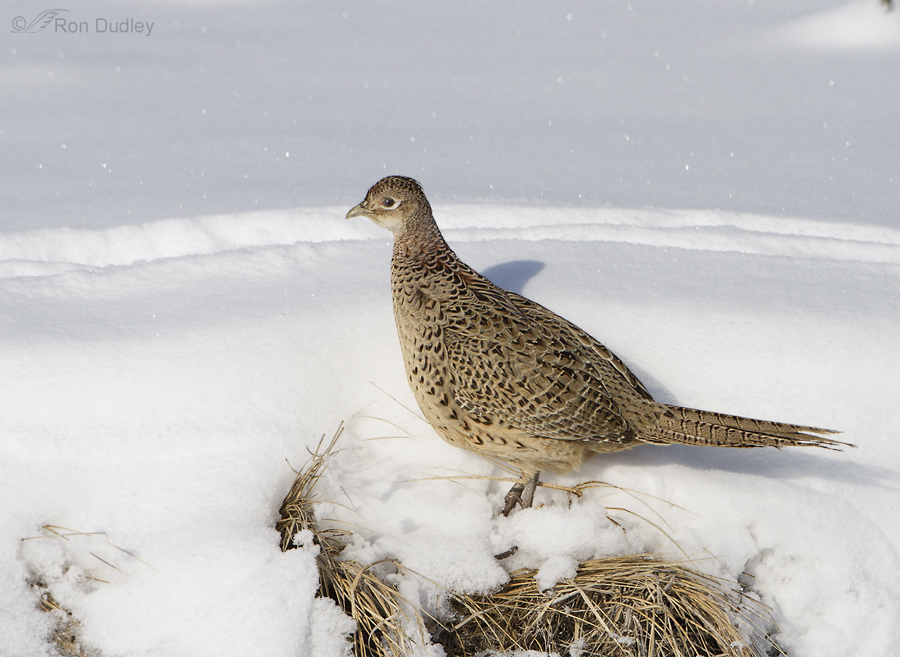
where she rested quite a while, apparently in some relief to get out of the snow.
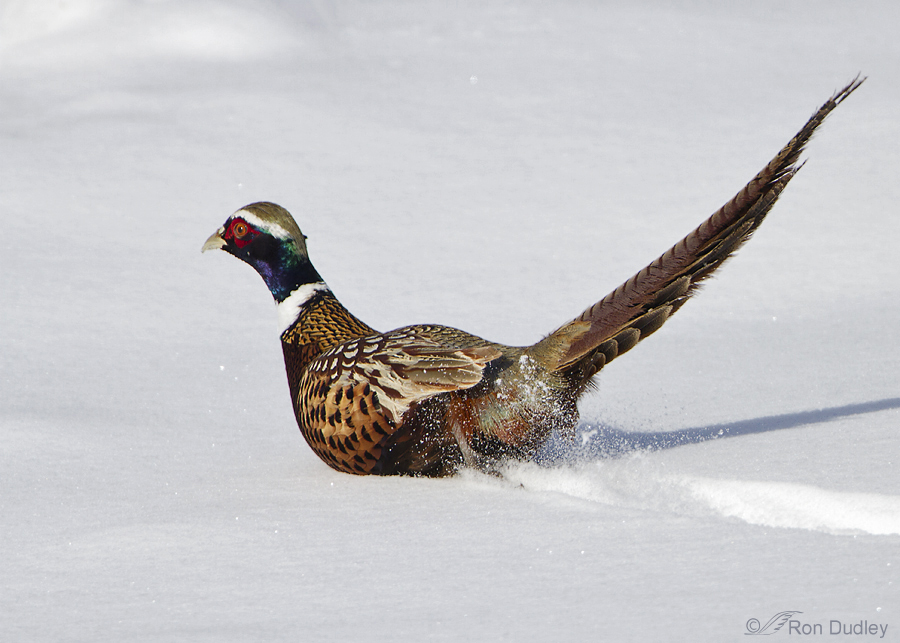
One of the methods they use when negotiating virgin snow is what I call “sledding”. They rest their breasts on the surface and propel themselves forward with churning feet, which creates quite the snow-spray behind them.
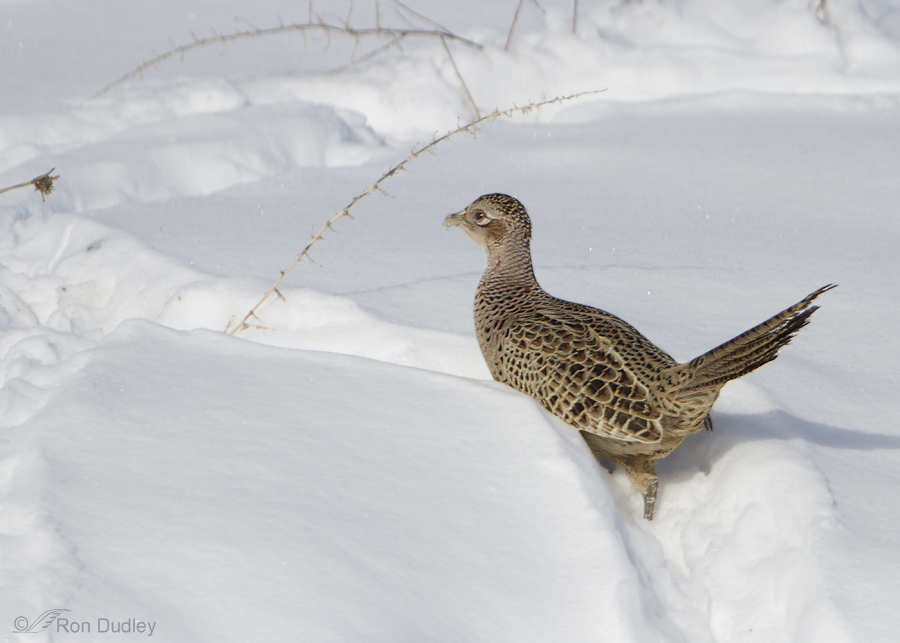
But as you might expect, to make life easier they often use channels made by other birds as they search for seeds still attached to stems sticking above the snow. However, this strategy has a disadvantage.
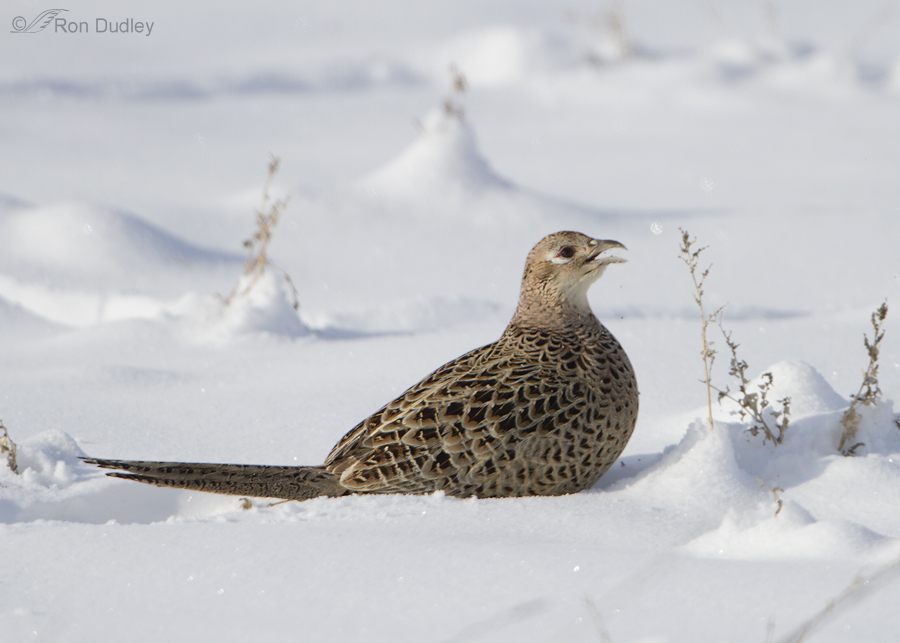
Those pre-made channels through the snow often lead the bird to stems that have already been picked clean of seeds by other pheasants. This female pecked at the stem once before moving on to more productive stems. Notice, above her tail, another channel that led to the stem there. (this bird isn’t very sharp but I include the photo to show the behavior)
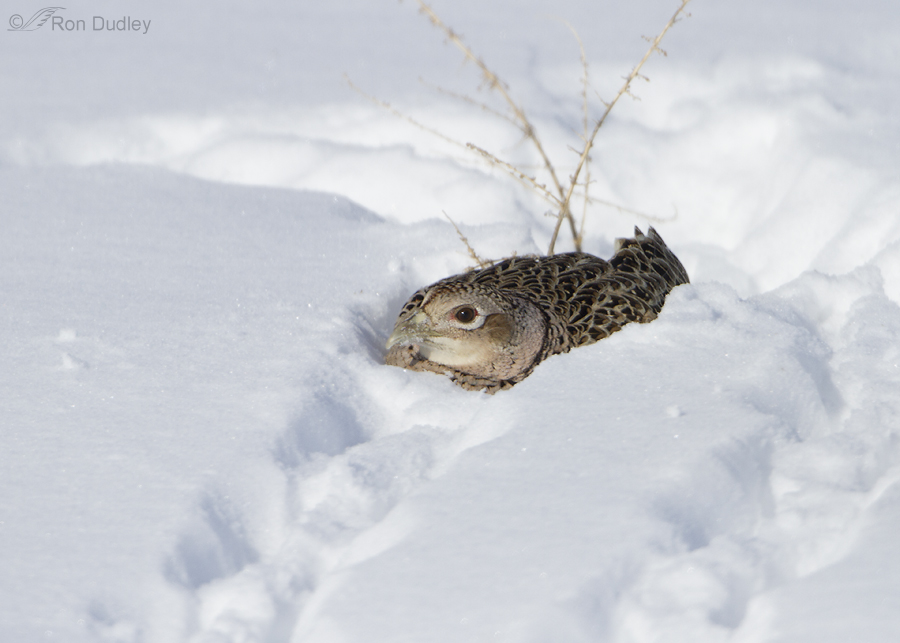
In season these pheasants are heavily hunted so they’re fairly shy. As I approach them in my pickup they often hunker down in the snow in an obvious attempt to be less conspicuous. Sometimes there’s not much more than the head visible.
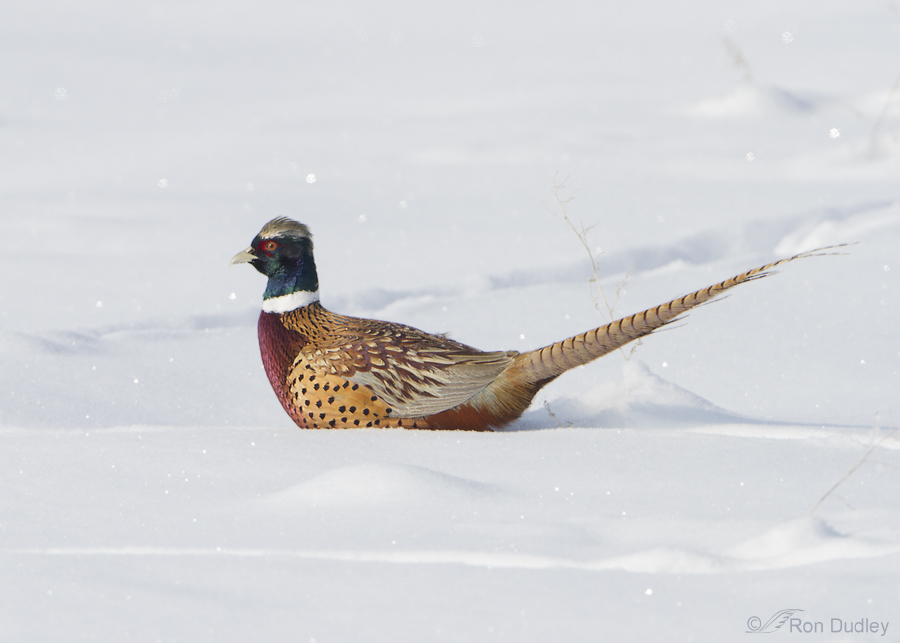
The males in particular are difficult to photograph well in bright snow. Unless they’re almost exactly broadside to the sun it’s very difficult to get enough light on the dark colors of the bird to show those amazing colors to best advantage without blowing out the whites of the snow.
But I continue to try because they’re such beautiful birds…
Ron


Hi Ron,
I rarely comment, but truly enjoy reading your insightful comments daily, and especially your spectacular photos.
I love your pheasant photos, and learning their habits is interesting. We haven’t had much snow up here (yet)
but I’m always curious about tracks in the snow.
More fantastic pictueres and commentary. Thanks so much!
Wow, those males are beautiful against the crystalline snow. The snow-spray churning off the “sledder” is a true example of a Rooster Tail!
I like that, Mike – hadn’t thought of it.
These pheasants are so absolutely beautiful against the snow. I get visits from pheasants, but don’t usually see them right against the snow like this. It really makes their colors stand out!
I like them against the snow too, Teri – despite the challenges of photographing them there. Thank you.
This is a really nice series of photos and wonderful narrative on behavior. The male certainly has some complex colors and I can see where it’s difficult to get the right balance when all you have for background is pure white. Of course, you make it look easy……:)
It only looks “easy” Wally because you aren’t seeing my mountainous pile of rejected images…
Your narrative is as always so deep and relevant to the species. Love all this colour and photo quality.
Thank you, Maria. I’m always glad to hear when my narrative is appropriate and relevant.